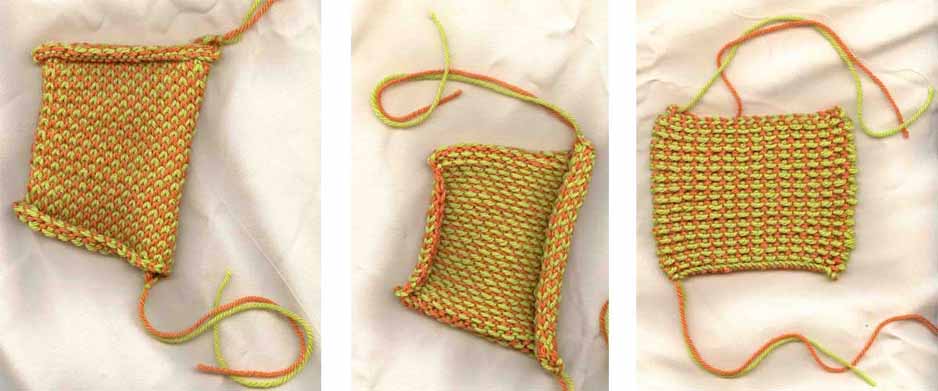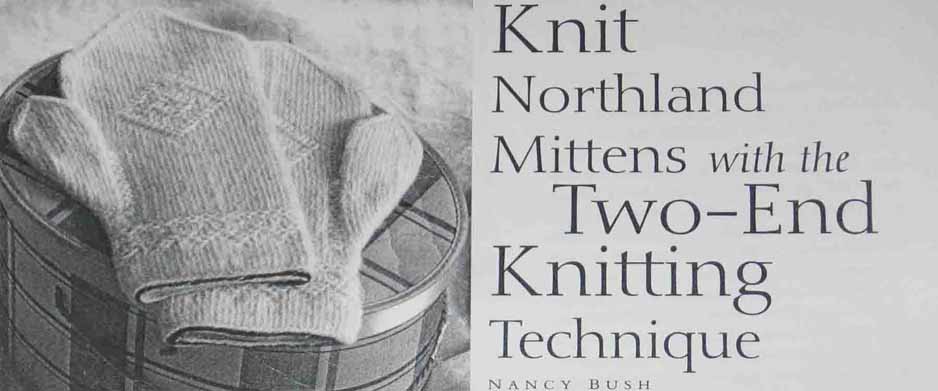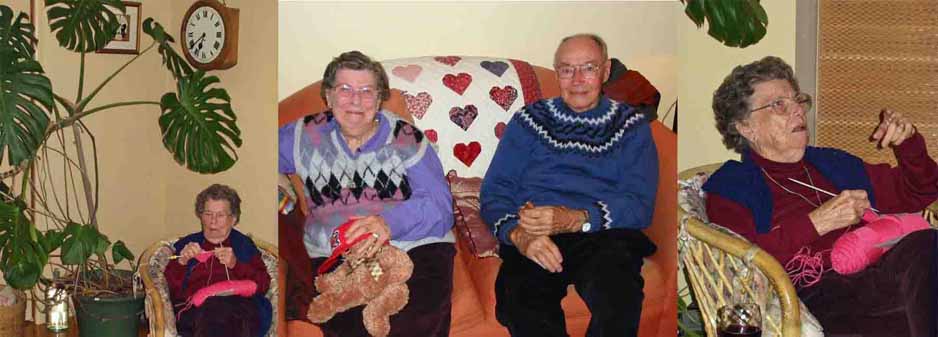My parents were coming to stay. There’d be lots of sitting round talking. Always useful to have plenty of knitting on hand at such times. Mum usually had lots to tell me from her genealogical diggings and this time was no exception.
I was working with multi strands of a 4ply yarn that I love to use whenever possible. Single strand work always looked good in the stranded patterns that I’d come to call Feral Knitting and this time I was doing ‘one by one’ stranding with two balls of yarn and medium needles. Let’s call the yarns A and B. ‘One by one’ stranding simply means knitting the first row ABABABABAB and purling back ABABABABAB. I was alternating the yarns ………. if the next stitch was A, I used B and vice versa.
This was easy enough to do when talking – I’d done it lots of times before. I could certainly have done so blindfold. …….it’s amazing what your fingers know about knitting. As it turned out though I was only doing plain rows. Instead of having nice smooth stocking stitch on one side with all the floats from the stranding on the purl side I had a flat reversible garter stitch like fabric with the short floats from the stranding appearing on both sides.
I liked what I saw.


I started playing and experimenting using different yarns and different sized needles. I searched through all my books and magazines and consulted more experienced knitters, expecting to find the stitch somewhere. I was keen to find what it was really called and what uses others had put it to because I couldn’t, and still can’t, believe that someone, somewhere hasn’t made the same ‘mistake’ as I had. In the meantime and for convenience I started calling it Superb or Super Garter and started making items using the stitch. For a while I changed the name to Stranded Garter that being a better description. But on the internet I found a Double Stranded Garter stitch that was quite different so I’ve now decided to call it Woven Garter as suggested by a friend, to avoid further confusion.
During the searches the closest related idea I found was in Montse Stanley’s The Handknitters Handbook. She describes Garter-stitch jacquard in which two yarns are stranded in each row and there are no purl rows. But it’s different from Woven Garter as she talks about taking the floats to the wrong side so that they don’t appear on the right side.
In some ways Woven Garter is also similar to a technique I’ve read about from Scandinavia called Twined Knitting. Montse Stanley describes a similar process as Two-strand knitting. Nancy Bush calls it Two End Knitting.

